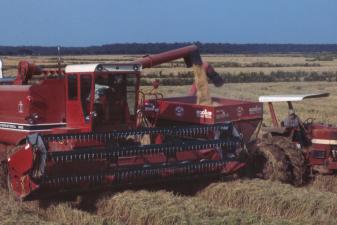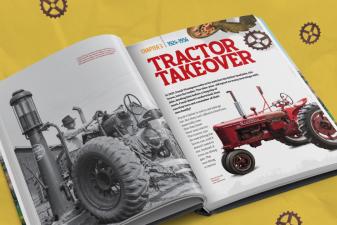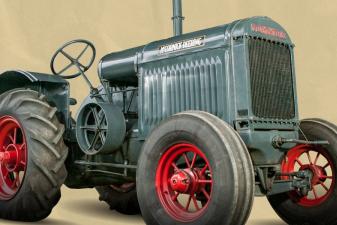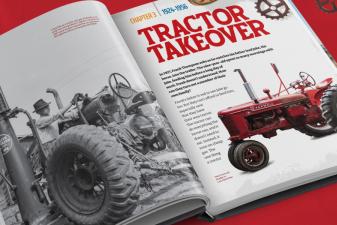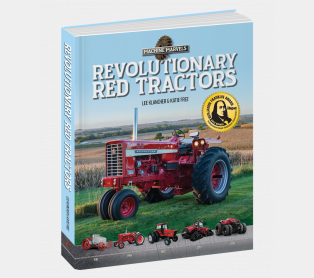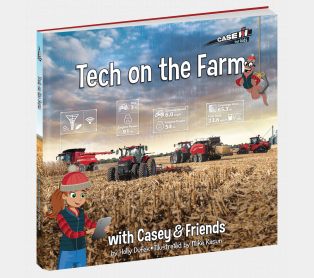The Friendly Farmall

Celebrate 100 years of Farmall with Revolutionary Red Tractors, an ideal book for young readers fascinated with machinery as well as for anyone who wants to learn more about the hardworking people and the machines that feed our world! In this excerpt, 10-year old Frank and his family buy one of the early Farmalls.
Frank Thompson, only 10 years old, is nervous. Today, he will drive the tractor through the fields to cultivate. Cultivation means breaking up dirt around plants. This helps plants grow by destroying weeds and allowing more water and air into the softer soil.
His dad tells him that he’s ready. But cultivating is tricky. The front wheels of the tractor only just fit in between the rows of crops. Frank must drive the tractor perfectly through the field, or risk pulling up the cotton his family just planted.
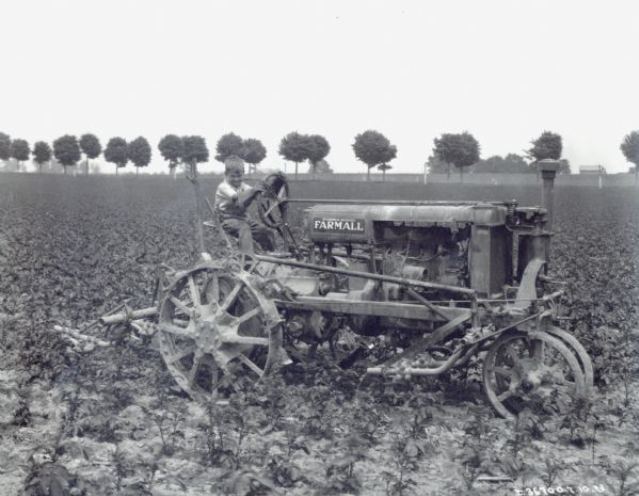
Before 1923, tractors could pull a plow and turn a belt, but they couldn’t cultivate. The tractors weren’t tall enough to drive over tall crops. That meant that farmers still needed a horse. Finally, an answer to that problem came with the arrival of the Farmall. The Farmall was the first general-purpose tractor, and it had taller rear wheels so it could plow, harvest, cultivate, and so much more. For the next 30 years, every tractor looked a lot like the Farmall.
Engineer Bert R. Benjamin was the main force behind the Farmall. In the 1910s, Benjamin began dreaming of a machine that could finally replace a horse. But his test tractors looked odd and didn’t work smoothly. Many people at IH wanted Benjamin to stop working on his project. They had spent a lot of money building McCormick-Deerings and didn’t want the Farmall to steal any sales away.
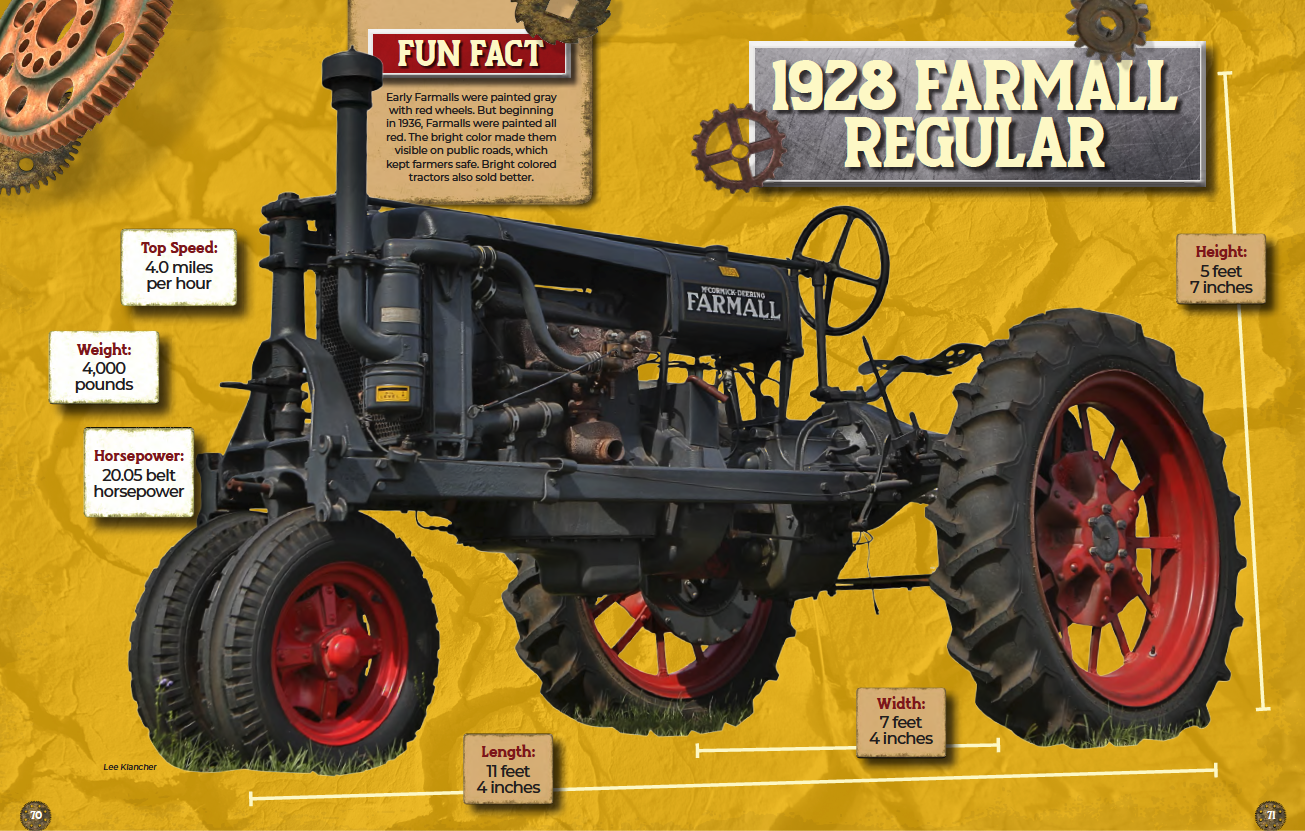
Benjamin never gave up and by 1920 his engineering team had a test model that ran eleven farming implements, or tools, attached to the tractor. The International 8-16 could only run four implements without help from horses or more people. Despite this, the bosses at IH were unimpressed. The economy wasn’t great and tractor sales were suffering. But the head of IH engineering had a hunch that Benjamin was on to something big and allowed him to keep working on the project.
In 1923, the Farmall was finally ready to be sold to farmers. Many of the first Farmalls were sent to Texas. Texas farmers loved their Farmalls. They wrote a letter to the president of IH threatening to build their own Farmalls if IH didn’t produce more.
The most revolutionary feature was that a Farmall could cultivate, thanks to its design. Its narrow front wheels and tall frame allowed it to pass over crops without destroying them. Early Farmalls were gray with red wheels. The iconic “red tractor” wouldn’t emerge until 1936.
In 1926, Farmall sales began to take off. By 1930, IH was building 200 a day. Other tractor makers scrambled to build a competitor. Because of his determination, Bert Benjamin had succeeded. He built an all-purpose tractor that became the blueprint for all future tractors.
Frank’s family bought a Farmall in 1927 for their Texas farm. Now, his biggest test lies ahead of him. The 10-year-old looks at the field, taking a deep breath. This is his chance to prove himself. Frank shifts into gear and rolls toward the crops. Slowly and steadily, he drives straight down the row.
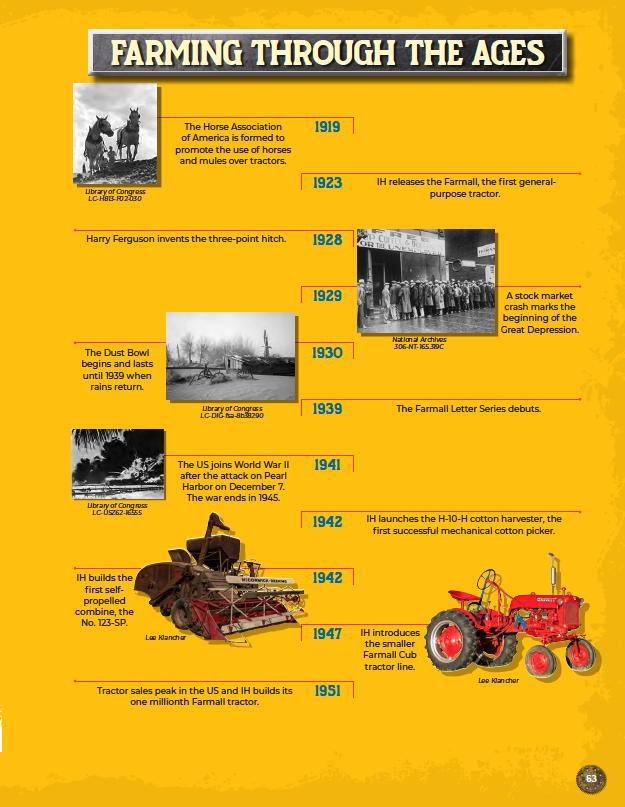
Check out Revolutionary Red Tractors for more!


